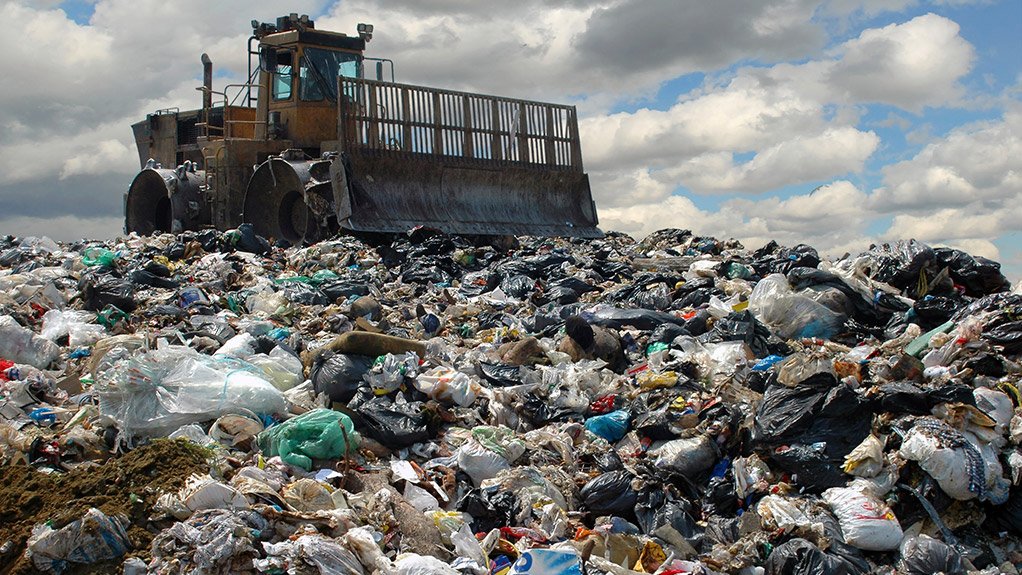Vissershok landfill to generate electricity from 2024/25 – City of Cape Town
The City of Cape Town says the landfill gas well field and flaring system at its Vissershok Landfill will soon begin operation, complementing existing systems at the Coastal Park and Bellville landfills.
The city says it is also making steady progress toward the generation of electricity from landfill gas, as part of a dual effort to reduce emissions associated with landfill sites, and reduce reliance on Eskom.
For the next three financial years, a total of R86.4-million has been budgeted for the operation and maintenance of a recently completed landfill gas flaring system at the Vissershok Landfill, notes the council.
A system to convert landfill gas from this site into electricity is also being designed for implementation around 2024/25, at an estimated cost of R197-million.
Organic matter that ends up in landfills decomposes in the absence of oxygen and forms landfill gas that is rich in methane. This landfill gas is known to have a global warming potential about 25 times greater than carbon dioxide.
To reduce emissions from the landfill, ‘wells’ are dug into the landfill site to extract the gas. The wells are then connected to the flare compound where it will initially be combusted/flared and, in future, be diverted to a gas engine to generate electricity.
The City of Cape Town is in the process of appointing a service provider to operate and maintain the recently constructed gas well field and flaring system at Vissershok.
The council says the gas turbine electricity generation system for the site has already entered the design phase, with the first 2 MW generation infrastructure scheduled for implementation in 2024/25, increasing to between 7 MW to 9 MW of generation capacity by 2026/27, depending on gas yields.
According to Eskom, 1 MW is sufficient to power 650 average homes in South Africa, meaning that this system could potentially supply power for up to 5 850 average homes.
Similar to systems at the Coastal Park and Bellville South Landfill facilities, the project has been designed in such a way that the city can earn carbon credits, notes the metro.
A carbon credit is earned when an entity destroys one ton of greenhouse gas (GHG) that would otherwise be released into the atmosphere.
The City of Cape Town has resolved that these carbon credits will be auctioned off on the South African market to companies that need, or want, to offset their carbon emissions.
Proceeds from the auction will be ring-fenced to fund urban waste management projects in Cape Town that reduce the health and pollution impacts of waste, and that will generate additional co-benefits such as job creation for communities.
At this stage, it is still too early to determine accurately how much GHG will be destroyed over the life of the landfill projects, or how much money the City will save by offsetting its reliance on Eskom, as it depends on gas yields that could vary over the 15- to 20-year lifespan of the project, depending on patterns of organic waste disposal in the city.
However, current estimates show that between the sale of carbon credits and the expected reduction of bulk electricity purchases from Eskom, the project should pay for itself at least, notes the city.
“Although the expected contribution of waste-to-energy activities is not sufficient to reduce load-shedding on their own, the reduction in emissions is significant and will be achieved effectively at no additional cost to the ratepayer,” notes Urban Waste Management MMC Grant Twigg.
“We are nearing the first production of electricity from landfill gas turbines at Coastal Park landfill in the coming months, and the first issuance of carbon credits for landfill gas flaring at Bellville South landfill is expected this year,” he adds.
Article Enquiry
Email Article
Save Article
Feedback
To advertise email advertising@creamermedia.co.za or click here
Comments
Press Office
Announcements
What's On
Subscribe to improve your user experience...
Option 1 (equivalent of R125 a month):
Receive a weekly copy of Creamer Media's Engineering News & Mining Weekly magazine
(print copy for those in South Africa and e-magazine for those outside of South Africa)
Receive daily email newsletters
Access to full search results
Access archive of magazine back copies
Access to Projects in Progress
Access to ONE Research Report of your choice in PDF format
Option 2 (equivalent of R375 a month):
All benefits from Option 1
PLUS
Access to Creamer Media's Research Channel Africa for ALL Research Reports, in PDF format, on various industrial and mining sectors
including Electricity; Water; Energy Transition; Hydrogen; Roads, Rail and Ports; Coal; Gold; Platinum; Battery Metals; etc.
Already a subscriber?
Forgotten your password?
Receive weekly copy of Creamer Media's Engineering News & Mining Weekly magazine (print copy for those in South Africa and e-magazine for those outside of South Africa)
➕
Recieve daily email newsletters
➕
Access to full search results
➕
Access archive of magazine back copies
➕
Access to Projects in Progress
➕
Access to ONE Research Report of your choice in PDF format
RESEARCH CHANNEL AFRICA
R4500 (equivalent of R375 a month)
SUBSCRIBEAll benefits from Option 1
➕
Access to Creamer Media's Research Channel Africa for ALL Research Reports on various industrial and mining sectors, in PDF format, including on:
Electricity
➕
Water
➕
Energy Transition
➕
Hydrogen
➕
Roads, Rail and Ports
➕
Coal
➕
Gold
➕
Platinum
➕
Battery Metals
➕
etc.
Receive all benefits from Option 1 or Option 2 delivered to numerous people at your company
➕
Multiple User names and Passwords for simultaneous log-ins
➕
Intranet integration access to all in your organisation





















